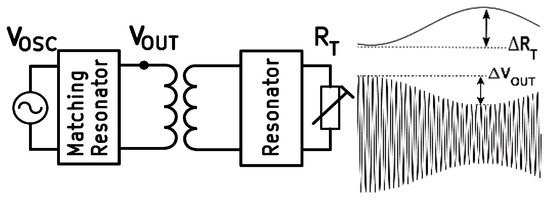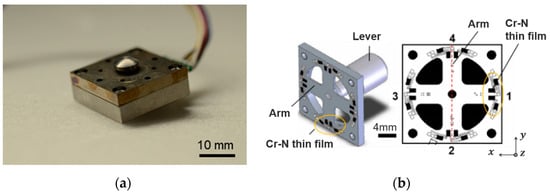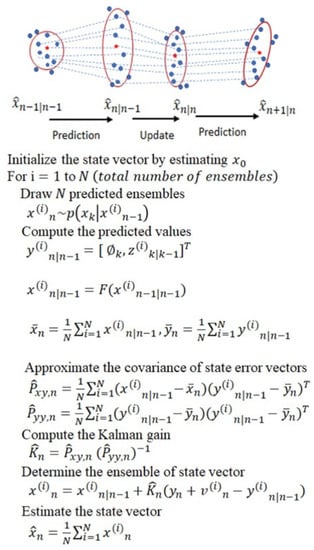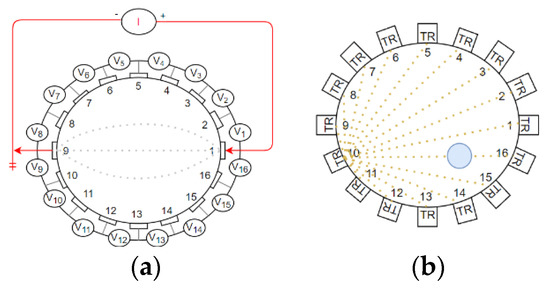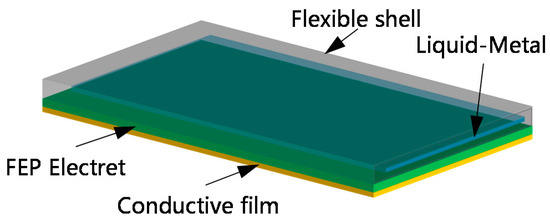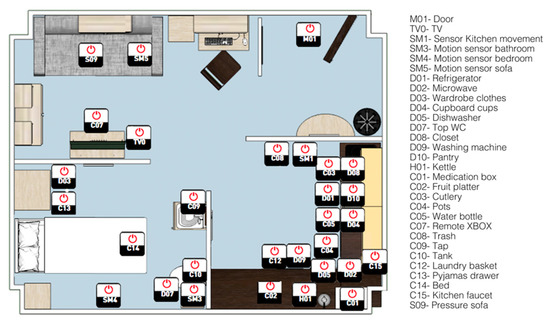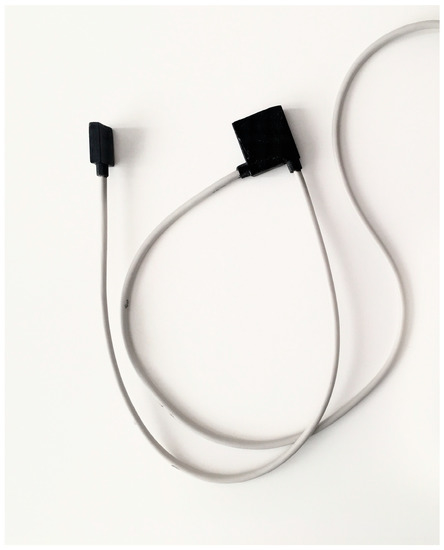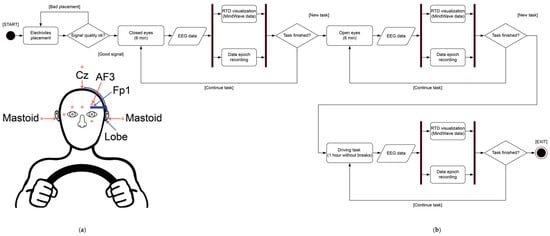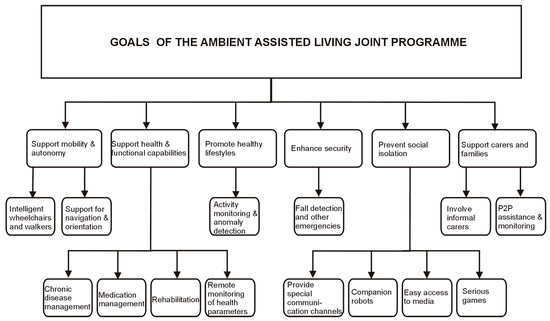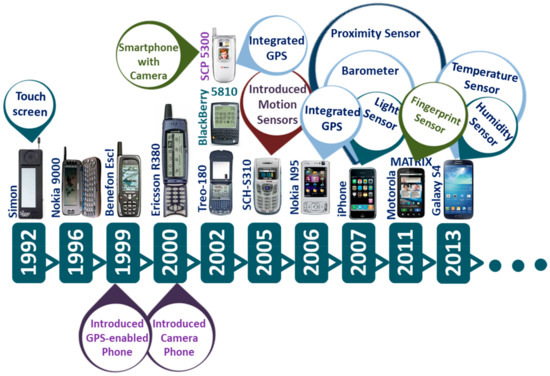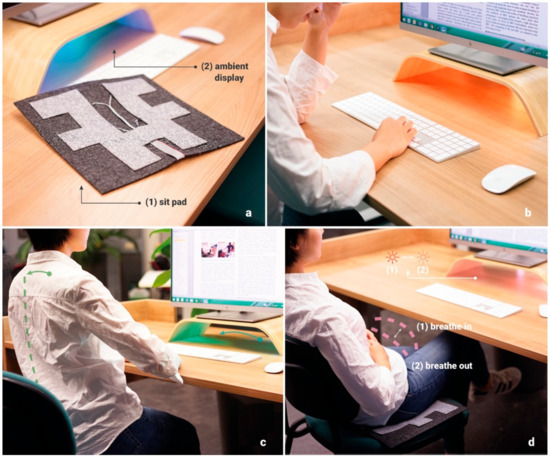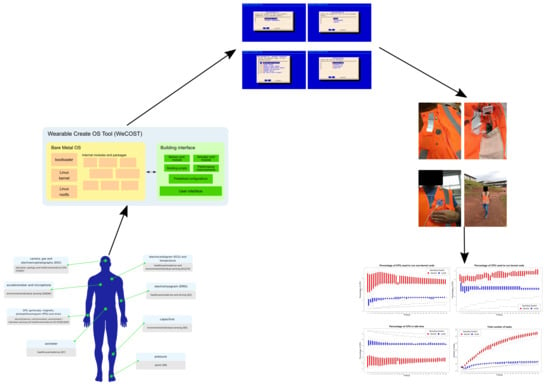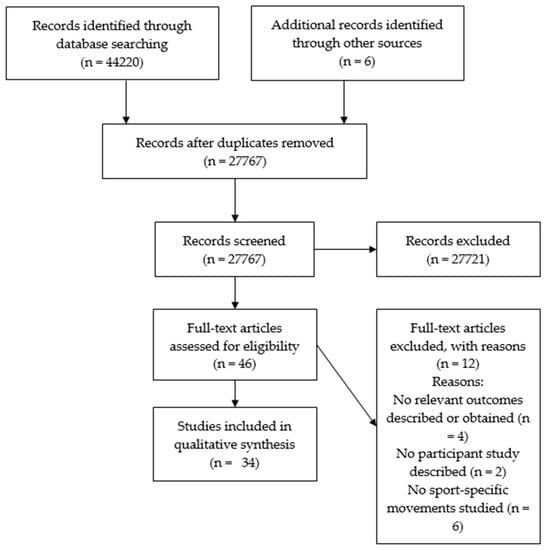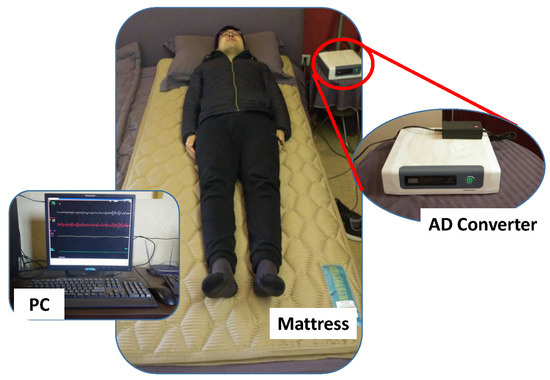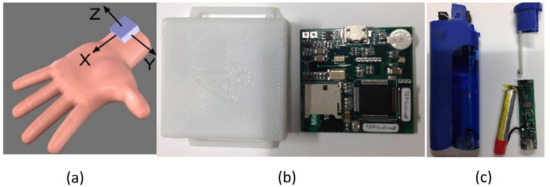Wearable and Unobtrusive Biomedical Monitoring
A topical collection in Sensors (ISSN 1424-8220). This collection belongs to the section "Wearables".
Viewed by 179231
Share This Topical Collection
Editors
 Prof. Dr. Toshiyo Tamura
Prof. Dr. Toshiyo Tamura
 Prof. Dr. Toshiyo Tamura
Prof. Dr. Toshiyo Tamura
E-Mail
Website
Collection Editor
Future Robotics Organization, Waseda University, Tokyo, Japan
Interests: bio instrumentation; bio signal interpretation; noninvasive monitor; unobtrusive sensing; blood pressure monitoring; healthcare system; assistive device; temperature regulation; heat stroke
Special Issues, Collections and Topics in MDPI journals
 Prof. Dr. Wenxi Chen
Prof. Dr. Wenxi Chen
 Prof. Dr. Wenxi Chen
Prof. Dr. Wenxi Chen
E-Mail
Website
Collection Editor
Biomedical Information Engineering Lab, The University of Aizu, Aizu-Wakamatsu City, Fukushima Prefecture 965-8580, Japan
Interests: biomedical instrumentation; signal processing; data analysis; seamless monitoring for daily healthcare; heaven–earth–human interaction; healthology
Special Issues, Collections and Topics in MDPI journals
Topical Collection Information
Dear Colleagues,
Wearable and unobtrusive monitoring systems are rapidly evolving and used for healthcare, exercise activity monitoring, performance assessment, and other fields such as the environmental, agricultural, and food industries.
Concomitantly with the development of biocompatible materials and IoT technologies, the optimization of the sensing system has become more complex, ranging from biology, chemistry, nanotechnology, and micro-fabrication to wireless networks and electronic engineering.
The aims of this Topical Collection are as follows:
- To present the current developments in wearable and unobtrusive monitoring including medical parameters such as cardiopulmonary, bioelectrical signal, motion and rehabilitation, temperature, blood substances, and nutrition estimation.
- Recent developments in wearable and unobtrusive monitoring devices are more accurate than previous ones. The scope of monitoring will spread widely, among medically approved, precise devices as well as environmental and industrial monitoring including emergency and safety monitoring. Additionally, simple handling, fast response, low cost, and highly reliable devices are needed to improve quality of life. We welcome such device development, total monitoring system with wireless transmitting and storing data technologies, and security.
- Both review articles and original research papers are welcome. We have a particular interest in papers concerning novel and innovative approaches in wearable and unobtrusive monitors, as well as total monitoring systems.
Prof. Toshiyo Tamura
Prof. Wenxi Chen
Collection Editors
Manuscript Submission Information
Manuscripts should be submitted online at www.mdpi.com by registering and logging in to this website. Once you are registered, click here to go to the submission form. Manuscripts can be submitted until the deadline. All submissions that pass pre-check are peer-reviewed. Accepted papers will be published continuously in the journal (as soon as accepted) and will be listed together on the collection website. Research articles, review articles as well as short communications are invited. For planned papers, a title and short abstract (about 100 words) can be sent to the Editorial Office for announcement on this website.
Submitted manuscripts should not have been published previously, nor be under consideration for publication elsewhere (except conference proceedings papers). All manuscripts are thoroughly refereed through a single-blind peer-review process. A guide for authors and other relevant information for submission of manuscripts is available on the Instructions for Authors page. Sensors is an international peer-reviewed open access semimonthly journal published by MDPI.
Please visit the Instructions for Authors page before submitting a manuscript.
The Article Processing Charge (APC) for publication in this open access journal is 2600 CHF (Swiss Francs).
Submitted papers should be well formatted and use good English. Authors may use MDPI's
English editing service prior to publication or during author revisions.
Keywords
- Wearable sensing
- Unobtrusive sensing
- Image monitoring
- Microfluidic
- Flexible and tattoo sensors and electronics
- Sensor miniaturization
- Sensor signal processing
- Internet of wearable things
- Microscale power/storage system
Published Papers (20 papers)
Open AccessReview
Unobtrusive Bed Monitor State of the Art
by
Toshiyo Tamura and Ming Huang
Viewed by 310
Abstract
On average, people spend more than a quarter of their day in bed. If physiological information could be collected automatically while we sleep, it would be effective not only for health management but also for disease prevention. Unobtrusive bed monitoring devices have been
[...] Read more.
On average, people spend more than a quarter of their day in bed. If physiological information could be collected automatically while we sleep, it would be effective not only for health management but also for disease prevention. Unobtrusive bed monitoring devices have been developed over the past 30 years or so to detect physiological information without awareness, and this method attracted attention again in the 2020s, with the proliferation of deep learning, AI, and IoT. This section describes the current state of the art.
Full article
►▼
Show Figures
Open AccessArticle
Misalignment-Tolerant Planar Spiral Coil Pair Design for 13.56 MHz Inductive Coupling of Wireless Resistive Analog Passive Sensors
by
Babak Noroozi and Bashir I. Morshed
Cited by 1 | Viewed by 1565
Abstract
Long-term daily-life body signal monitoring offers numerous advantages, such as timely response to health alerts, diseases monitoring, and reducing time and expenses related to clinical trials. Access to physiological data can be achieved with low-cost and comfortable wireless wearable sensors. In our previous
[...] Read more.
Long-term daily-life body signal monitoring offers numerous advantages, such as timely response to health alerts, diseases monitoring, and reducing time and expenses related to clinical trials. Access to physiological data can be achieved with low-cost and comfortable wireless wearable sensors. In our previous publication, we reported a low-cost, easy to implement, and unobtrusive wireless resistive analog passive (WRAP) sensor to provide a feasible bio-signal monitoring technique by using a pair of printed spiral coils (PSC) in a near field connection. Sensitivity, defined as the response to the transducer, is a critical feature in the establishment of a reliable system. In the previous publication, we presented the utilization of a Genetic Algorithm to design a pair of coils and related components to maximize sensitivity. Although the coils’ misalignment can significantly affect the optimized sensitivity, it was not incorporated into the optimization process. This paper focuses on optimizing the coils and components in order to maximize both their sensitivity and their resilience against movements of the PSC pair. In a square-shaped pair comprising a primary coil of 60 mm and a secondary coil of 20 mm dimensions, we found that the sensitivity is maximized at 1.3 mƱ for a 16 mm axial distance. Additionally, it remains above 0.65 mƱ within ±11.25 mm lateral and +14 mm axial displacements.
Full article
►▼
Show Figures
Open AccessArticle
Prediction of Three-Directional Ground Reaction Forces during Walking Using a Shoe Sole Sensor System and Machine Learning
by
Takeshi Yamaguchi, Yuya Takahashi and Yoshihiro Sasaki
Cited by 5 | Viewed by 3257
Abstract
We developed a shoe sole sensor system with four high-capacity, compact triaxial force sensors using a nitrogen added chromium strain-sensitive thin film mounted on the sole of a shoe. Walking experiments were performed, including straight walking and turning (side-step and cross-step turning), in
[...] Read more.
We developed a shoe sole sensor system with four high-capacity, compact triaxial force sensors using a nitrogen added chromium strain-sensitive thin film mounted on the sole of a shoe. Walking experiments were performed, including straight walking and turning (side-step and cross-step turning), in six healthy young male participants and two healthy young female participants wearing the sole sensor system. A regression model to predict three-directional ground reaction forces (GRFs) from force sensor outputs was created using multiple linear regression and Gaussian process regression (GPR). The predicted GRF values were compared with the GRF values measured with a force plate. In the model trained on data from the straight walking and turning trials, the percent root-mean-square error (%RMSE) for predicting the GRFs in the anteroposterior and vertical directions was less than 15%, except for the GRF in the mediolateral direction. The model trained separately for straight walking, side-step turning, and cross-step turning showed a %RMSE of less than 15% in all directions in the GPR model, which is considered accurate for practical use.
Full article
►▼
Show Figures
Open AccessArticle
Fetal Electrocardiogram Extraction from the Mother’s Abdominal Signal Using the Ensemble Kalman Filter
by
Sadaf Sarafan, Tai Le, Michael P. H. Lau, Afshan Hameed, Tadesse Ghirmai and Hung Cao
Cited by 15 | Viewed by 2911
Abstract
Fetal electrocardiogram (fECG) assessment is essential throughout pregnancy to monitor the wellbeing and development of the fetus, and to possibly diagnose potential congenital heart defects. Due to the high noise incorporated in the abdominal ECG (aECG) signals, the extraction of fECG has been
[...] Read more.
Fetal electrocardiogram (fECG) assessment is essential throughout pregnancy to monitor the wellbeing and development of the fetus, and to possibly diagnose potential congenital heart defects. Due to the high noise incorporated in the abdominal ECG (aECG) signals, the extraction of fECG has been challenging. And it is even a lot more difficult for fECG extraction if only one channel of aECG is provided, i.e., in a compact patch device. In this paper, we propose a novel algorithm based on the Ensemble Kalman filter (EnKF) for non-invasive fECG extraction from a single-channel aECG signal. To assess the performance of the proposed algorithm, we used our own clinical data, obtained from a pilot study with 10 subjects each of 20 min recording, and data from the PhysioNet 2013 Challenge bank with labeled QRS complex annotations. The proposed methodology shows the average positive predictive value (PPV) of 97.59%, sensitivity (SE) of 96.91%, and F1-score of 97.25% from the PhysioNet 2013 Challenge bank. Our results also indicate that the proposed algorithm is reliable and effective, and it outperforms the recently proposed extended Kalman filter (EKF) based algorithm.
Full article
►▼
Show Figures
Open AccessArticle
A New Digital Platform for Collecting Measurement Data from the Novel Imaging Sensors in Urology
by
Grzegorz Rybak, Krzysztof Strzecha and Marek Krakós
Cited by 6 | Viewed by 2624
Abstract
The use of UT and EIT technologies gives the opportunity to develop new, effective, minimally invasive diagnostic methods for urology. The introduction of new diagnostic methods into medicine requires the development of new tools for collecting, processing and analysing the data obtained from
[...] Read more.
The use of UT and EIT technologies gives the opportunity to develop new, effective, minimally invasive diagnostic methods for urology. The introduction of new diagnostic methods into medicine requires the development of new tools for collecting, processing and analysing the data obtained from them. Such system might be seen as a part of the electronic health record EHR system. The digital medical data management platform must provide the infrastructure that will make medical activity possible and effective in the presented scope. The solution presented in this article was implemented using the newest computer technologies to obtain advantages such as mobility, versatility, flexibility and scalability. The architecture of the developed platform, technological stack proposals, database structure and user interface are presented. In the course of this study, an analysis of known and available standards such as Hl7, RIM, DICOM, and tools for collecting medical data was performed, and the results obtained using them are also presented. The developed digital platform also falls into an innovative path of creating a network of sensors communicating with each other in the digital space, resulting in the implementation of the IoT (Internet of Things) vision. The issues of building software based on the architecture of microservices were discussed emphasizing the role of message brokers. The selected message brokers were also analysed in terms of available features and message transmission time.
Full article
►▼
Show Figures
Open AccessArticle
Wearable Device Oriented Flexible and Stretchable Energy Harvester Based on Embedded Liquid-Metal Electrodes and FEP Electret Film
by
Jianbing Xie, Yiwei Wang, Rong Dong and Kai Tao
Cited by 13 | Viewed by 5153
Abstract
In this paper, a flexible and stretchable energy harvester based on liquid-metal and fluorinated ethylene propylene (FEP) electret films is proposed and implemented for the application of wearable devices. A gallium liquid-metal alloy with a melting point of 25.0 °C is used to
[...] Read more.
In this paper, a flexible and stretchable energy harvester based on liquid-metal and fluorinated ethylene propylene (FEP) electret films is proposed and implemented for the application of wearable devices. A gallium liquid-metal alloy with a melting point of 25.0 °C is used to form the stretchable electrode; therefore, the inducted energy harvester will have excellent flexibility and stretchability. The solid-state electrode is wrapped in a dragon-skin silicone rubber shell and then bonded with FEP electret film and conductive film to form a flexible and stretchable energy harvester. Then, the open-circuit voltage of the designed energy harvester is tested and analyzed. Finally, the fabricated energy harvester is mounted on the elbow of a human body to harvest the energy produced by the bending of the elbow. The experimental results show that the flexible and stretchable energy harvester can adapt well to elbow bending and convert elbow motion into electric energy to light the LED in a wearable watch.
Full article
►▼
Show Figures
Open AccessArticle
Neural Network Ensembles for Sensor-Based Human Activity Recognition Within Smart Environments
by
Naomi Irvine, Chris Nugent, Shuai Zhang, Hui Wang and Wing W. Y. NG
Cited by 65 | Viewed by 6259
Abstract
In this paper, we focus on data-driven approaches to human activity recognition (HAR). Data-driven approaches rely on good quality data during training, however, a shortage of high quality, large-scale, and accurately annotated HAR datasets exists for recognizing activities of daily living (ADLs) within
[...] Read more.
In this paper, we focus on data-driven approaches to human activity recognition (HAR). Data-driven approaches rely on good quality data during training, however, a shortage of high quality, large-scale, and accurately annotated HAR datasets exists for recognizing activities of daily living (ADLs) within smart environments. The contributions of this paper involve improving the quality of an openly available HAR dataset for the purpose of data-driven HAR and proposing a new ensemble of neural networks as a data-driven HAR classifier. Specifically, we propose a homogeneous ensemble neural network approach for the purpose of recognizing activities of daily living within a smart home setting. Four base models were generated and integrated using a support function fusion method which involved computing an output decision score for each base classifier. The contribution of this work also involved exploring several approaches to resolving conflicts between the base models. Experimental results demonstrated that distributing data at a class level greatly reduces the number of conflicts that occur between the base models, leading to an increased performance prior to the application of conflict resolution techniques. Overall, the best HAR performance of 80.39% was achieved through distributing data at a class level in conjunction with a conflict resolution approach, which involved calculating the difference between the highest and second highest predictions per conflicting model and awarding the final decision to the model with the highest differential value.
Full article
►▼
Show Figures
Open AccessArticle
Validation of a Novel Device for the Knee Monitoring of Orthopaedic Patients
by
Mahmut Enes Kayaalp, Alison N. Agres, Jan Reichmann, Maxim Bashkuev, Georg N. Duda and Roland Becker
Cited by 21 | Viewed by 3980
Abstract
Fast-track surgery is becoming increasingly popular, whereas the monitoring of postoperative rehabilitation remains a matter of considerable debate. The aim of this study was to validate a newly developed wearable system intended to monitor knee function and mobility. A sensor system with a
[...] Read more.
Fast-track surgery is becoming increasingly popular, whereas the monitoring of postoperative rehabilitation remains a matter of considerable debate. The aim of this study was to validate a newly developed wearable system intended to monitor knee function and mobility. A sensor system with a nine-degree-of-freedom (DOF) inertial measurement unit (IMU) was developed. Thirteen healthy volunteers performed five 10-meter walking trials with simultaneous sensor and motion capture data collection. The obtained kinematic waveforms were analysed using root mean square error (RMSE) and correlation coefficient (CC) calculations. The Bland–Altman method was used for the agreement of discrete parameters consisting of peak knee angles between systems. To test the reliability, 10 other subjects with sensors walked a track of 10 metres on two consecutive days. The Pearson CC was excellent for the walking data set between both systems (r = 0.96) and very good (r = 0.95) within the sensor system. The RMSE during walking was 5.17° between systems and 6.82° within sensor measurements. No significant differences were detected between the mean values observed, except for the extension angle during the stance phase (E1). Similar results were obtained for the repeatability test. Intra-class correlation coefficients (ICCs) between systems were excellent for the flexion angle during the swing phase (F1); good for the flexion angle during the stance phase (F2) and the re-extension angle, which was calculated by subtracting the extension angle at swing phase (E2) from F2; and moderate for the extension angle during the stance phase (E1), E2 and the range of motion (ROM). ICCs within the sensor measurements were good for the ROM, F2 and re-extension, and moderate for F1, E1 and E2. The study shows that the novel sensor system can record sagittal knee kinematics during walking in healthy subjects comparable to those of a motion capture system.
Full article
►▼
Show Figures
Open AccessArticle
Validation of Electroencephalographic Recordings Obtained with a Consumer-Grade, Single Dry Electrode, Low-Cost Device: A Comparative Study
by
Héctor Rieiro, Carolina Diaz-Piedra, José Miguel Morales, Andrés Catena, Samuel Romero, Joaquin Roca-Gonzalez, Luis J. Fuentes and Leandro L. Di Stasi
Cited by 45 | Viewed by 9309
Abstract
The functional validity of the signal obtained with low-cost electroencephalography (EEG) devices is still under debate. Here, we have conducted an in-depth comparison of the EEG-recordings obtained with a medical-grade golden-cup electrodes ambulatory device, the SOMNOwatch + EEG-6, vs those obtained with a
[...] Read more.
The functional validity of the signal obtained with low-cost electroencephalography (EEG) devices is still under debate. Here, we have conducted an in-depth comparison of the EEG-recordings obtained with a medical-grade golden-cup electrodes ambulatory device, the SOMNOwatch + EEG-6, vs those obtained with a consumer-grade, single dry electrode low-cost device, the NeuroSky MindWave, one of the most affordable devices currently available. We recorded EEG signals at Fp1 using the two different devices simultaneously on 21 participants who underwent two experimental phases: a 12-minute resting state task (alternating two cycles of closed/open eyes periods), followed by 60-minute virtual-driving task. We evaluated the EEG recording quality by comparing the similarity between the temporal data series, their spectra, their signal-to-noise ratio, the reliability of EEG measurements (comparing the closed eyes periods), as well as their blink detection rate. We found substantial agreement between signals: whereas, qualitatively, the NeuroSky MindWave presented higher levels of noise and a biphasic shape of blinks, the similarity metric indicated that signals from both recording devices were significantly correlated. While the NeuroSky MindWave was less reliable, both devices had a similar blink detection rate. Overall, the NeuroSky MindWave is noise-limited, but provides stable recordings even through long periods of time. Furthermore, its data would be of adequate quality compared to that of conventional wet electrode EEG devices, except for a potential calibration error and spectral differences at low frequencies.
Full article
►▼
Show Figures
Open AccessArticle
Unobtrusive Monitoring the Daily Activity Routine of Elderly People Living Alone, with Low-Cost Binary Sensors
by
Ioan Susnea, Luminita Dumitriu, Mihai Talmaciu, Emilia Pecheanu and Dan Munteanu
Cited by 36 | Viewed by 6736
Abstract
Most expert projections indicate that in 2030, there will be over one billion people aged 60 or over. The vast majority of them prefer to spend their last years at home, and almost a third of them live alone. This creates a growing
[...] Read more.
Most expert projections indicate that in 2030, there will be over one billion people aged 60 or over. The vast majority of them prefer to spend their last years at home, and almost a third of them live alone. This creates a growing need for technology-based solutions capable of helping older people to live independently in their places. Despite the wealth of solutions proposed for this general problem, there are very few support systems that can be reproduced on a larger scale. In this study, we propose a method to monitor the activity of the elderly living alone and detect deviations from the previous activity patterns based on the idea that the residential living environment can be modeled as a collection of behaviorally significant places located arbitrarily in a generic space. Then we use virtual pheromones—a concept defined in our previous work—to create images of the pheromone distribution maps, which describe the spatiotemporal evolution of the interactions between the user and the environment. We propose a method to detect deviations from the activity routines based on a simple statistical analysis of the resulting images. By applying this method on two public activity recognition datasets, we found that the system is capable of detecting both singular deviations and slow-deviating trends from the previous activity routine of the monitored persons.
Full article
►▼
Show Figures
Open AccessArticle
Dry Electrode-Based Body Fat Estimation System with Anthropometric Data for Use in a Wearable Device
by
Seung-Chul Shin, Jinkyu Lee, Soyeon Choe, Hyuk In Yang, Jihee Min, Ki-Yong Ahn, Justin Y. Jeon and Hong-Goo Kang
Cited by 9 | Viewed by 12792
Abstract
The bioelectrical impedance analysis (BIA) method is widely used to predict percent body fat (PBF). However, it requires four to eight electrodes, and it takes a few minutes to accurately obtain the measurement results. In this study, we propose a faster and more
[...] Read more.
The bioelectrical impedance analysis (BIA) method is widely used to predict percent body fat (PBF). However, it requires four to eight electrodes, and it takes a few minutes to accurately obtain the measurement results. In this study, we propose a faster and more accurate method that utilizes a small dry electrode-based wearable device, which predicts whole-body impedance using only upper-body impedance values. Such a small electrode-based device typically needs a long measurement time due to increased parasitic resistance, and its accuracy varies by measurement posture. To minimize these variations, we designed a sensing system that only utilizes contact with the wrist and index fingers. The measurement time was also reduced to five seconds by an effective parameter calibration network. Finally, we implemented a deep neural network-based algorithm to predict the PBF value by the measurement of the upper-body impedance and lower-body anthropometric data as auxiliary input features. The experiments were performed with 163 amateur athletes who exercised regularly. The performance of the proposed system was compared with those of two commercial systems that were designed to measure body composition using either a whole-body or upper-body impedance value. The results showed that the correlation coefficient (
) value was improved by about 9%, and the standard error of estimate (SEE) was reduced by 28%.
Full article
►▼
Show Figures
Open AccessReview
Smartphone Sensors for Health Monitoring and Diagnosis
by
Sumit Majumder and M. Jamal Deen
Cited by 290 | Viewed by 36990
Abstract
Over the past few decades, we have witnessed a dramatic rise in life expectancy owing to significant advances in medical science and technology, medicine as well as increased awareness about nutrition, education, and environmental and personal hygiene. Consequently, the elderly population in many
[...] Read more.
Over the past few decades, we have witnessed a dramatic rise in life expectancy owing to significant advances in medical science and technology, medicine as well as increased awareness about nutrition, education, and environmental and personal hygiene. Consequently, the elderly population in many countries are expected to rise rapidly in the coming years. A rapidly rising elderly demographics is expected to adversely affect the socioeconomic systems of many nations in terms of costs associated with their healthcare and wellbeing. In addition, diseases related to the cardiovascular system, eye, respiratory system, skin and mental health are widespread globally. However, most of these diseases can be avoided and/or properly managed through continuous monitoring. In order to enable continuous health monitoring as well as to serve growing healthcare needs; affordable, non-invasive and easy-to-use healthcare solutions are critical. The ever-increasing penetration of smartphones, coupled with embedded sensors and modern communication technologies, make it an attractive technology for enabling continuous and remote monitoring of an individual’s health and wellbeing with negligible additional costs. In this paper, we present a comprehensive review of the state-of-the-art research and developments in smartphone-sensor based healthcare technologies. A discussion on regulatory policies for medical devices and their implications in smartphone-based healthcare systems is presented. Finally, some future research perspectives and concerns regarding smartphone-based healthcare systems are described.
Full article
►▼
Show Figures
Open AccessArticle
LightSit: An Unobtrusive Health-Promoting System for Relaxation and Fitness Microbreaks at Work
by
Xipei Ren, Bin Yu, Yuan Lu, Biyong Zhang, Jun Hu and Aarnout Brombacher
Cited by 38 | Viewed by 8317
Abstract
Physical inactivity and chronic stress at work increase the risks of developing metabolic disorders, mental illnesses, and musculoskeletal injuries, threatening office workers’ physical and psychological well-being. Although several guidelines and interventions have been developed to prevent theses subhealth issues, their effectiveness and health
[...] Read more.
Physical inactivity and chronic stress at work increase the risks of developing metabolic disorders, mental illnesses, and musculoskeletal injuries, threatening office workers’ physical and psychological well-being. Although several guidelines and interventions have been developed to prevent theses subhealth issues, their effectiveness and health benefits are largely limited when they cannot match workday contexts. This paper presents LightSit, a health-promoting system that helps people reduce physically inactive behaviors and manage chronic stress at work. LightSit comprises a sensor mat that can be embedded into an office chair for measuring a user’s sitting posture and heart rate variability and a lighting display that is integrated into a monitor stand to present information unobtrusively, facilitating fitness and relaxation exercises during microbreaks. Following the showroom approach, we evaluated LightSit during a public exhibition at Dutch Design Week 2018. During the eight days of the exhibition, we observed more than 500 sessions of experiences with healthy microbreaks using our prototype. Semistructured interviews were conducted with 50 participants who had office-based jobs and had experienced LightSit. Our qualitative findings indicated the potential benefits of LightSit in facilitating health-promoting behaviors during office work. Based on the insights learned from this study, we discuss the implications for future designs of interactive health-promoting systems.
Full article
►▼
Show Figures
Open AccessArticle
Software and Hardware Requirements and Trade-Offs in Operating Systems for Wearables: A Tool to Improve Devices’ Performance
by
Vicente J. P. Amorim, Mateus C. Silva and Ricardo A. R. Oliveira
Cited by 6 | Viewed by 9707
Abstract
Wearable device requirements currently vary from soft to hard real-time constraints. Frequently, hardware improvements are a way to speed-up the global performance of a solution. However, changing some parts or the whole hardware may increase device complexity, raising the costs and leading to
[...] Read more.
Wearable device requirements currently vary from soft to hard real-time constraints. Frequently, hardware improvements are a way to speed-up the global performance of a solution. However, changing some parts or the whole hardware may increase device complexity, raising the costs and leading to development delays of products or research prototypes. This paper focuses on software improvements, presenting a tool designed to create different versions of operating systems (OSs) fitting the specifications of wearable devices projects. Authors have developed a software tool allowing the end-user to craft a new OS in just a few steps. In order to validate the generated OS, an original wearable prototype for mining environments is outlined. Resulting data presented here allows for measuring the actual impact an OS has in different variables of a solution. Finally, the analysis also allows for evaluating the performance impact associated with each hardware part. Results suggest the viability of using the proposed solution when searching for performance improvements on wearables.
Full article
►▼
Show Figures
Open AccessReview
Exploring the Role of Wearable Technology in Sport Kinematics and Kinetics: A Systematic Review
by
Yewande Adesida, Enrica Papi and Alison H. McGregor
Cited by 177 | Viewed by 28134
Abstract
The aim of this review was to understand the use of wearable technology in sport in order to enhance performance and prevent injury. Understanding sports biomechanics is important for injury prevention and performance enhancement and is traditionally assessed using optical motion capture. However,
[...] Read more.
The aim of this review was to understand the use of wearable technology in sport in order to enhance performance and prevent injury. Understanding sports biomechanics is important for injury prevention and performance enhancement and is traditionally assessed using optical motion capture. However, such approaches are limited by capture volume restricting assessment to a laboratory environment, a factor that can be overcome by wearable technology. A systematic search was carried out across seven databases where wearable technology was employed to assess kinetic and kinematic variables in sport. Articles were excluded if they focused on sensor design and did not measure kinetic or kinematic variables or apply the technology on targeted participants. A total of 33 articles were included for full-text analysis where participants took part in a sport and performed dynamic movements relating to performance monitored by wearable technologies. Inertial measurement units, flex sensors and magnetic field and angular rate sensors were among the devices used in over 15 sports to quantify motion. Wearable technology usage is still in an exploratory phase, but there is potential for this technology to positively influence coaching practice and athletes’ technique.
Full article
►▼
Show Figures
Open AccessArticle
Unobtrusive Mattress-Based Identification of Hypertension by Integrating Classification and Association Rule Mining
by
Fan Liu, Xingshe Zhou, Zhu Wang, Jinli Cao, Hua Wang and Yanchun Zhang
Cited by 28 | Viewed by 5075
Abstract
Hypertension is one of the most common cardiovascular diseases, which will cause severe complications if not treated in a timely way. Early and accurate identification of hypertension is essential to prevent the condition from deteriorating further. As a kind of complex physiological state,
[...] Read more.
Hypertension is one of the most common cardiovascular diseases, which will cause severe complications if not treated in a timely way. Early and accurate identification of hypertension is essential to prevent the condition from deteriorating further. As a kind of complex physiological state, hypertension is hard to characterize accurately. However, most existing hypertension identification methods usually extract features only from limited aspects such as the time-frequency domain or non-linear domain. It is difficult for them to characterize hypertension patterns comprehensively, which results in limited identification performance. Furthermore, existing methods can only determine whether the subjects suffer from hypertension, but they cannot give additional useful information about the patients’ condition. For example, their classification results cannot explain why the subjects are hypertensive, which is not conducive to further analyzing the patient’s condition. To this end, this paper proposes a novel hypertension identification method by integrating classification and association rule mining. Its core idea is to exploit the association relationship among multi-dimension features to distinguish hypertensive patients from normotensive subjects. In particular, the proposed method can not only identify hypertension accurately, but also generate a set of class association rules (CARs). The CARs are proved to be able to reflect the subject’s physiological status. Experimental results based on a real dataset indicate that the proposed method outperforms two state-of-the-art methods and three common classifiers, and achieves 84.4%, 82.5% and 85.3% in terms of accuracy, precision and recall, respectively.
Full article
►▼
Show Figures
Open AccessArticle
ECG Noise Cancellation Based on Grey Spectral Noise Estimation
by
Shing-Hong Liu, Cheng-Hsiung Hsieh, Wenxi Chen and Tan-Hsu Tan
Cited by 17 | Viewed by 7009
Abstract
In recent years, wearable devices have been popularly applied in the health care field. The electrocardiogram (ECG) is the most used signal. However, the ECG is measured under a body-motion condition, which is easily coupled with some noise, like as power line noise
[...] Read more.
In recent years, wearable devices have been popularly applied in the health care field. The electrocardiogram (ECG) is the most used signal. However, the ECG is measured under a body-motion condition, which is easily coupled with some noise, like as power line noise (PLn) and electromyogram (EMG). This paper presents a grey spectral noise cancellation (GSNC) scheme for electrocardiogram (ECG) signals where two-stage discrimination is employed with the empirical mode decomposition (EMD), the ensemble empirical mode decomposition (EEMD) and the grey spectral noise estimation (GSNE). In the first stage of the proposed GSNC scheme, the input ECG signal is decomposed by the EMD to obtain a set of intrinsic mode functions (IMFs). Then, the noise energies of IMFs are estimated by the GSNE. When an IMF is considered as noisy one, it is forwarded to the second stage for further check. In the second stage, the suspicious IMFs are reconstructed and decomposed by the EEMD. Then the IMFs are discriminated with a threshold. If the IMF is considered as noisy, it is discarded in the reconstruction process of the ECG signal. The proposed GSNC scheme is justified by forty-three ECG signal datasets from the MIT-BIH cardiac arrhythmia database where the PLn and EMG noise are under consideration. The results indicate that the proposed GSNC scheme outperforms the traditional EMD and EEMD based noise cancellation schemes in the given datasets.
Full article
►▼
Show Figures
Open AccessArticle
Cigarette Smoking Detection with An Inertial Sensor and A Smart Lighter
by
Volkan Senyurek, Masudul Imtiaz, Prajakta Belsare, Stephen Tiffany and Edward Sazonov
Cited by 43 | Viewed by 11094
Abstract
In recent years, a number of wearable approaches have been introduced for objective monitoring of cigarette smoking based on monitoring of hand gestures, breathing or cigarette lighting events. However, non-reactive, objective and accurate measurement of everyday cigarette consumption in the wild remains a
[...] Read more.
In recent years, a number of wearable approaches have been introduced for objective monitoring of cigarette smoking based on monitoring of hand gestures, breathing or cigarette lighting events. However, non-reactive, objective and accurate measurement of everyday cigarette consumption in the wild remains a challenge. This study utilizes a wearable sensor system (Personal Automatic Cigarette Tracker 2.0, PACT2.0) and proposes a method that integrates information from an instrumented lighter and a 6-axis Inertial Measurement Unit (IMU) on the wrist for accurate detection of smoking events. The PACT2.0 was utilized in a study of 35 moderate to heavy smokers in both controlled (1.5–2 h) and unconstrained free-living conditions (~24 h). The collected dataset contained approximately 871 h of IMU data, 463 lighting events, and 443 cigarettes. The proposed method identified smoking events from the cigarette lighter data and estimated puff counts by detecting hand-to-mouth gestures (HMG) in the IMU data by a Support Vector Machine (SVM) classifier. The leave-one-subject-out (LOSO) cross-validation on the data from the controlled portion of the study achieved high accuracy and F1-score of smoking event detection and estimation of puff counts (97%/98% and 93%/86%, respectively). The results of validation in free-living demonstrate 84.9% agreement with self-reported cigarettes. These results suggest that an IMU and instrumented lighter may potentially be used in studies of smoking behavior under natural conditions.
Full article
►▼
Show Figures
Open AccessArticle
Mobile User Indoor-Outdoor Detection through Physical Daily Activities
by
Aghil Esmaeili Kelishomi, A.H.S. Garmabaki, Mahdi Bahaghighat and Jianmin Dong
Cited by 36 | Viewed by 7057
Abstract
An automatic, fast, and accurate switching method between Global Positioning System and indoor positioning systems is crucial to achieve current user positioning, which is essential information for a variety of services installed on smart devices, e.g., location-based services (LBS), healthcare monitoring components, and
[...] Read more.
An automatic, fast, and accurate switching method between Global Positioning System and indoor positioning systems is crucial to achieve current user positioning, which is essential information for a variety of services installed on smart devices, e.g., location-based services (LBS), healthcare monitoring components, and seamless indoor/outdoor navigation and localization (SNAL). In this study, we proposed an approach to accurately detect the indoor/outdoor environment according to six different daily activities of users including walk, skip, jog, stay, climbing stairs up and down. We select a number of features for each activity and then apply ensemble learning methods such as Random Forest, and AdaBoost to classify the environment types. Extensive model evaluations and feature analysis indicate that the system can achieve a high detection rate with good adaptation for environment recognition. Empirical evaluation of the proposed method has been verified on the HASC-2016 public dataset, and results show 99% accuracy to detect environment types. The proposed method relies only on the daily life activities data and does not need any external facilities such as the signal cell tower or Wi-Fi access points. This implies the applicability of the proposed method for the upper layer applications.
Full article
►▼
Show Figures
Open AccessArticle
The Reliability and Validity of the Loadsol® under Various Walking and Running Conditions
by
Kristen E. Renner, DS Blaise Williams and Robin M. Queen
Cited by 83 | Viewed by 7903
Abstract
The assessment of loading during walking and running has historically been limited to data collection in laboratory settings or with devices that require a computer connection. This study aims to determine if the loadsol
®—a single sensor wireless insole—is a valid and
[...] Read more.
The assessment of loading during walking and running has historically been limited to data collection in laboratory settings or with devices that require a computer connection. This study aims to determine if the loadsol
®—a single sensor wireless insole—is a valid and reliable method of assessing force. Thirty (17 male and 13 female) recreationally active individuals were recruited for a two visit study where they walked (1.3 m/s) and ran (3.0 and 3.5 m/s) at a 0%, 10% incline, and 10% decline, with the visits approximately one week apart. Ground reaction force data was collected on an instrumented treadmill (1440 Hz) and with the loadsol
® (100 Hz). Ten individuals completed the day 1 protocol with a newer 200 Hz loadsol
®. Intraclass correlation coefficients (ICC3,k) were used to assess validity and reliability and Bland–Altman plots were generated to better understand loadsol
® validity. Across conditions, the peak force ICCs ranged from 0.78 to 0.97, which increased to 0.84–0.99 with the 200 Hz insoles. Similarly, the loading rate ICCs improved from 0.61 to 0.97 to 0.80–0.96 and impulse improved from 0.61 to 0.97 to 0.90–0.97. The 200 Hz insoles may be needed for loading rate and impulse in running. For both walking and running, the loadsol
® has excellent between-day reliability (>0.76).
Full article
►▼
Show Figures








